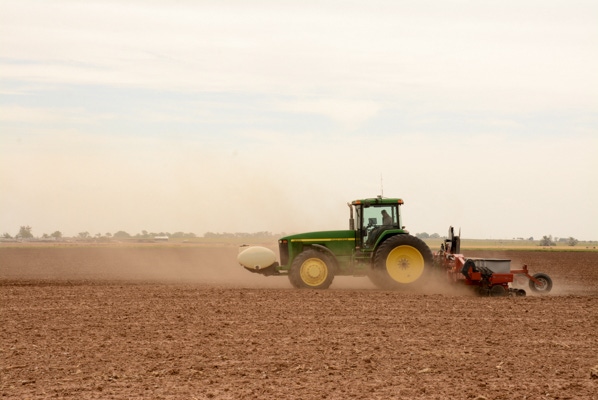Corn demand may need to be slashed by 500 million bu. due to projected lower yields and fewer planted acres.

The U.S. Department of Agriculture's latest "Crop Progress" report released Tuesday afternoon revealed that a mere 58% of this year’s corn crop was in the ground as of May 26, up from 49% the prior week but down from the five-year average of 90%. If the trend for late-planted corn continues, prices may force demand rationing.
Corn emergence was at a mere 32% as of May 26, down from the 69% five-year average. Soybean plantings were reported at 29%, compared to the five-year average of 66%.
Arlan Suderman, chief commodities economist at INTL FCStone Financial, stated that if late-planted acres and an estimated 6 million prevented-plant acres reduce corn yields by 5%, markets would need to ration demand by 500 million bu. “To do that, we would have to have prices over $5,” Suderman said.
With already very little corn being exported, both domestic livestock feed usage and ethanol demand would take a hit under the demand rationing scenario, he explained.
The ethanol market has a blended mandate of 10% ethanol, assuming that the Environmental Protection Agency doesn’t issue an overwhelming number of small refinery exemptions. Suderman said there is quite a bit of wheat that can be transitioned into feed rations. However, wheat is not a simple replacement in poultry and pig diets and requires significant rebalancing of other ingredients.
Bryce Knorr, senior grain market analyst for Farm Futures, said prevented planting could result in 1.4 billion bu. of lost potential. The current 6 million-acre projection for prevented planting is in “unchartered territory,” he said, with the most ever recorded coming in at around 3.6 million acres because data only go back to 2008.
If overall yields drop more like what occurred in 1993, things could get even worse. Rains started earlier this year before the crop was in the ground, while in 1993, rains came in June and resulted in national average corn yields of just 100 bu. per acre, compared to 131 bu. per acre the year before and 138 bu. the year after that.
Field trial work at the University of Illinois suggests that expected yields are between 80% and 85% of maximum yield when corn planting occurs in early June. A decline of this nature would be roughly 30 bu. per acre.
In a recent farmdoc analysis on corn price increases released May 21, the authors noted that more than the usual number of corn acres will likely not be planted by the final planting date for crop insurance purposes. Dates are as early as May 25 for states in the Great Plains to as late as June 5 in the eastern Corn Belt (see farmdoc daily, May 7, 2019). “It is quite possible that the May 25th final planting day will pass without much progress being made in the northern Great Plains,” they predicted.
That projection held true as South Dakota planting progress on May 26 was at just 25%. In the eastern Corn Belt, Indiana and Ohio had just 22% of their corn planted.
The 2019 projected corn price is $4.00/bu. The December contract settled at $4.04 on May 20 -- almost the same as the projected prices and well above the $3.72 low on May 9. Note that these are futures prices; “cash and forward-bid prices are considerably lower,” the economists noted, adding that fall delivery bids in central Illinois are running about 25 cents/bu. lower than futures prices.
“For farmland that has no inputs applied, cash corn prices must exceed $4.00 by large amounts for planting to have the same expected returns as taking prevented planting other than for fields with very high expected yields and individual farm insurance coverage levels below 80%,” farmdoc economists noted.
About the Author(s)
You May Also Like




.png?width=300&auto=webp&quality=80&disable=upscale)
